Las Cruces, NM Pollen and Allergy Report for Summer 2023
Pollen Allergy Trends in Las Cruces, NM
When is pollen lowest in Las Cruces, NM?

February
Lowest month total PPM
Avg. PPM
When is pollen highest in Las Cruces, NM?

March
Highest month total PPM
Avg. PPM
How does pollen in Las Cruces, NM compare to New Mexico?
Las Cruces has a lower average PPM than the state of New Mexico.
Las Cruces yearly avg PPM:
New Mexico yearly avg PPM:
How does pollen in Las Cruces, NM compare to the USA?
Las Cruces has a lower average PPM than the USA.
Las Cruces yearly avg PPM:
USA yearly avg PPM:
Is pollen worse this year in Las Cruces, NM?
Spring 2023 was better than spring 2022.
Spring 2023 PPM:
Spring 2022 PPM:
Average PPM in Las Cruces, NM

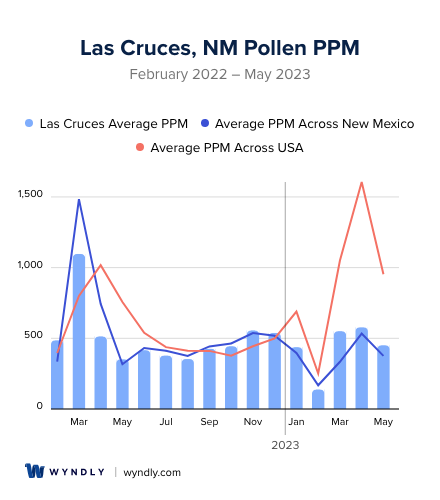
Las Cruces, NM Pollen and Allergy Breakdown by Month
Grass
When is grass pollen highest in Las Cruces, NM?
May has the highest grass pollen in Las Cruces, NM with an average PPM of
When is grass pollen lowest in Las Cruces, NM?
December has the lowest grass pollen in Las Cruces, NM with an average PPM of
Tree
When is tree pollen highest in Las Cruces, NM?
March has the highest tree pollen in Las Cruces, NM with an average PPM of
When is tree pollen lowest in Las Cruces, NM?
July has the lowest tree pollen in Las Cruces, NM with an average PPM of
Weed
When is weed pollen highest in Las Cruces, NM?
November has the highest weed pollen in Las Cruces, NM with an average PPM of
When is weed pollen lowest in Las Cruces, NM?
February has the lowest weed pollen in Las Cruces, NM with an average PPM of
Las Cruces, NM Pollen Monthly Breakdown by Pollen Type
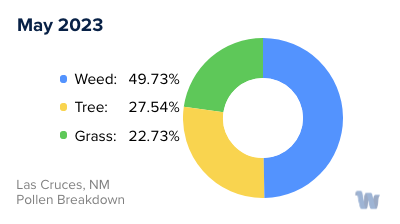
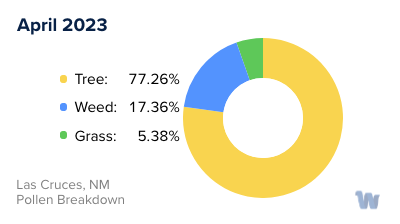
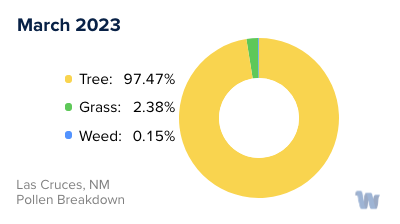


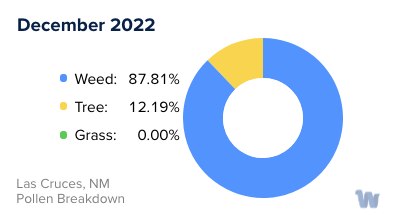
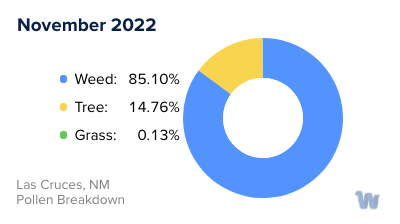

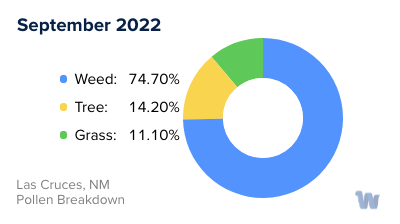
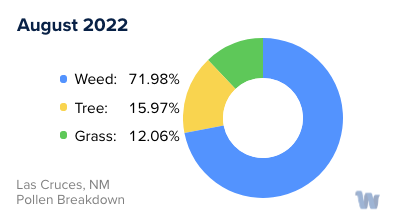



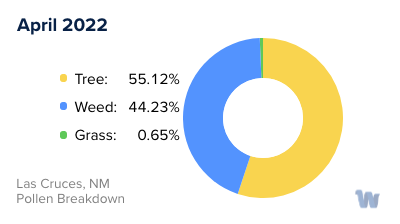

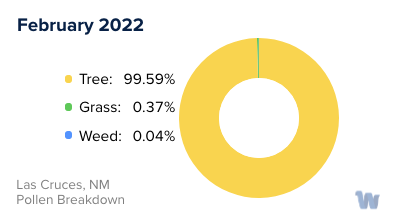
Pollen and Hay Fever in Las Cruces, NM
In the charming city of Las Cruces, New Mexico, residents and visitors alike may find themselves grappling with the effects of pollen allergies, often known colloquially as hay fever. These allergies are triggered by pollen grains released into the air by various plant species, with different types of pollen presenting throughout the year.
Three of the major types of pollen that affect the citizens of Las Cruces are tree pollen, grass pollen, and ragweed pollen. Each has its own distinct season, and their levels can fluctuate drastically from day to day. For instance, there may be days when tree and grass pollen levels are very high, and then suddenly drop to non-existent the next day. Conversely, ragweed pollen, while generally present, typically remains at low levels.
The flowering cycle of these plants, and consequently the pollen they release, is influenced by the seasons. For instance, the city sees the peak of tree pollen in the spring and early summer. This is when trees are actively blooming, releasing large amounts of pollen into the air. As a result, residents may experience heightened allergy symptoms during this period.
In contrast, grass and weed pollen, including ragweed, tend to peak in the fall. As these plants begin to bloom and release their pollen, those who are sensitive may find their allergy symptoms flaring up. Despite the seasonality of these pollen types, it's important to note that weather conditions and other environmental factors can also influence pollen levels on any given day.
While pollen allergies are often associated with the warmer months, it's important to remember that potential allergens are present year-round. For instance, mold spores, which some people are allergic to, are found in low concentrations throughout the year in Las Cruces.
Understanding the patterns of these pollen types and their seasons can help those living in or visiting Las Cruces better anticipate and manage their allergies, allowing them to fully enjoy the city's many delights all year round.

